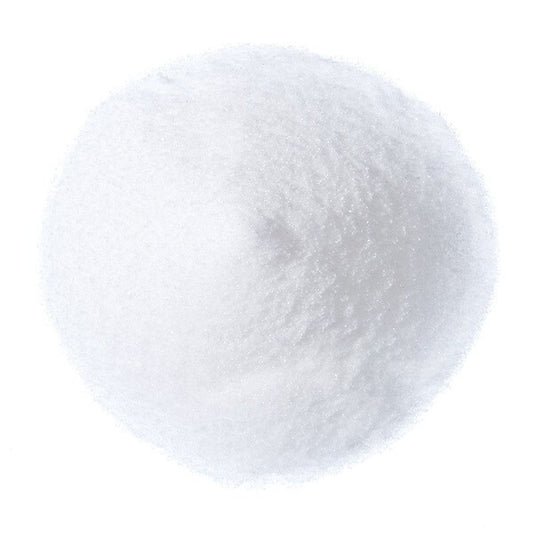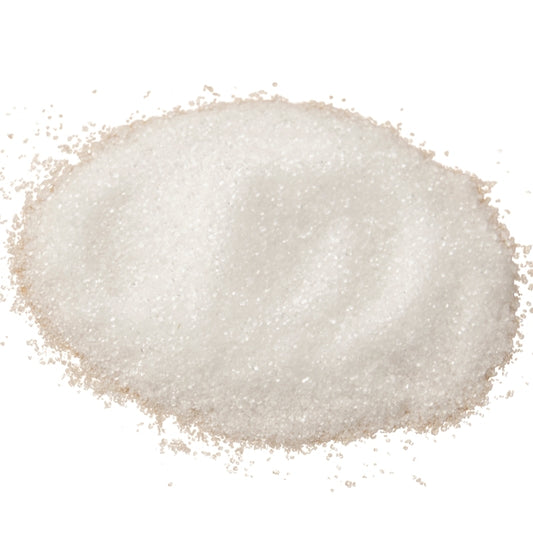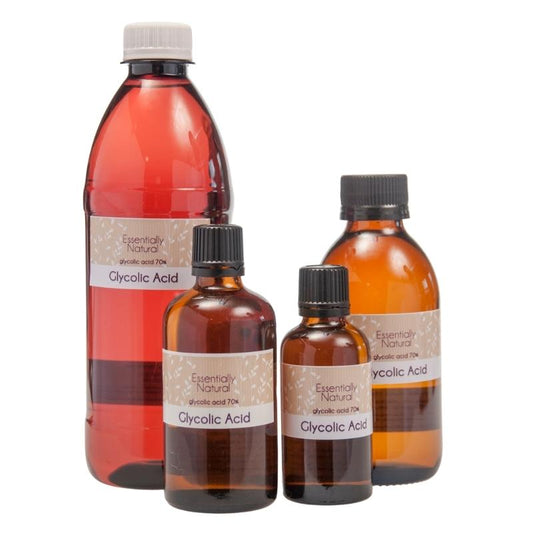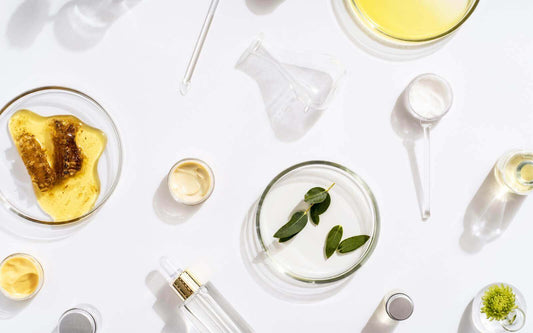
Working With Lactic Acid
Juliette van der MeerLactic acid is a well known alpha hydroxy acid, exfoliant and pH adjuster, but did you know it can also act as a humectant and moisturiser? It has an array of uses, but exactly how do you use it in formulations - let's find out.
What is Lactic Acid?
Lactic acid is produced by fermentation of carbohydrates, and also occurs naturally in the body - when it builds up it can give you a 'stitch'. It is a clear to brownish coloured liquid, has a pH: <2 and it is soluble in water and glycerine.
How does Lactic Acid Elevate Skincare?
Alpha hydroxy acids have been shown to promote smoother, younger looking skin by increasing the rate of cell renewal, exfoliating the top layer of skin, helping smooth and even complexion, keep pores unclogged, brighten the skin and even fade dark marks and discoloration. As an AHA, lactic acid can help stimulate collagen and strengthen the skin, which equals fewer fine lines and wrinkles. No wonder we've all heard good things about it!
Beware! When using AHAs in any form it is advised to be extra careful in the sun as they can make the skin more sensitive to sun exposure. For example, if you were to formulate a hydrosol or toner (for a moisturising, plumping effect) using Lactic Acid, do remember to wear sunscreen as a method of protection.
A formula example of a Toner With Lactic Acid would include:
- 99.5% hydrosol of choice
- 0.5% lactic acid
Method: Weigh out the ingredients and blend well to incorporate. You can use it daily as a spritzer or apply with a cotton pad as a toner. Following this apply sunscreen.
What is the recommended usage or concentration for Lactic Acid In Formulations?
Lactic acid is recommended to be used in formulas from 0.5-10%, and it should be added to the cool down phase or cold processed as it is heat sensitive. Depending on the kind of product you make, you will need to check the final pH of your formulation so that it is not too low. If the pH of an emulsion drops too low it may destabilise and you'll end up with separation. So please adjust the pH if necessary.
Can Lactic Acid adjust pH?
In formulations, lactic acid is also used as a pH adjuster to lower the pH. As it is quite strong, you can quickly adjust the pH level and very little is needed. You can add the 80% strength solution directly but as it is very powerful it can quickly lower the pH which may require re-adjusting up, so we suggest rather making a dilution of a lower strength as a pH adjuster.
How do you Optimally Dilute Lactic Acid?
Lactic acid comes in different strengths and the one we have available is 80%. But what if you need a lower % lactic acid solution? Here's how to dilute it:
Formula: C1V1 = C2V2
Where C1 is the concentration of the starting solution and V1 is the volume of the starting solution;
and C2 is the concentration of the final solution and V2 is the volume of the final solution.
You can decide what you want your final volume/amount to be (V2) which then allows you to calculate the starting amount (V1). You'll then know how much water to top it up with!
Let's calculate.
The starting concentration C1 is always going to be 80% (or 0.8) since that is the concentration of the lactic acid we have.
If you want a 10% dilution, C2 will be 10% or 0.1. And let's say you need to end up with 10g of it (your V2).
To calculate V1, we reshuffle the equation to look like this: V1 = C2V2/C1
V1 = (0.1 x 10)/0.8 = 1.25
So your starting volume is 1.25g and your ending volume is 10g, therefore you add 10 - 1.25g = 8.75g water!
We've worked out a few dilutions and put them in easier terms here, for those who don't like math:
1 part 80% solution + 1 part water = 40% solution
1 part 80% solution + 3 parts water = 20% solution
1 part 80% solution + 7 parts water = 10% solution


















31 comments
Hi Techluxe,
Thank you for the kind words – and that does seem like a very convenient site! However, should you ever need to calculate on the fly – I’m sure you’re capable of doing so :)
Best Wishes and Best Of Luck With Your Formulations!
Kind Regards,
Aiden
Great Article! I found an online calculator that accurately dumbs down the formula.
https://lotioncrafter.com/pages/calculators#:~:text=Enter%20the%20total%20amount%20you%20want%20to%20make%2C,of%20product%20you%20want%20in%20the%20desired%20concentration.
Hi Kerry!
It’s great that you’re trying out new things! But I do believe a brief explanation is in order.
The separation between the Lactic Acid and your current oil formulation would be due to Lactic Acid being strictly water soluble – in oil Lactic Acid does not really dissolve properly.
With regards to the interesting pink color – this could be due to the sudden pH dip or oxidation.
This is not ideal!
You do have a few options:
1. Add an emulsifier, even a gentle one like Lecithin would be good (Soy Lecithin is usually 0.5-5% of a formulation and added in the oil phase – but for more information on emulsifiers read : https://essentiallynatural.co.za/blogs/the-essentially-natural-blog/quick-guide-to-emulsifiers)
2. Keep The Lactic Acid Separate – You could keep your Face Oil sweet and simple without adding anything water based and therefore not need to add any preservative or emulsifier (but still try to include vitamin E to fight of oxidation).
Then have a separate, water based product that you apply before applying your face oil – and then any other water based products you have in mind is suddenly available! (like niacinamide or vitamin C – for more on this you could read: https://essentiallynatural.co.za/blogs/the-essentially-natural-blog/easy-water-based-serums)
Remember, now that we’re introducing water based products, it would be wise to add a preservative, like Geogard, or the life span of product could diminish greatly.
Tip: If you do find the acidity is still too intense and causing irritation, you could buffer the Lactic Acid with something like Sodium Lactate.
I hope this helps, if not we are keen to assist further!
Best Wishes,
Aiden
Hi there! I wanted to add lactic acid to a face oil formulation, (black seed oil, jojoba, squalane, and bakuchiol) but when i add the lactic acid it seperates and turns pink? Any recommendations?
Hi Camilla,
I hope that you are doing well!
I completely understand your confusion – when I first dealt with this I shared the confusion but hopefully we can alleviate this together.
Now – we stock 80 concentration of Lactic Acid but we need to calculate the weight – because you specified, we’re going to use 10ml in the calculation.
- Gravity of 80% Lactic Acid : around 1.22g/ml
General Calculation: 10ml x 1.22g/ml = 12.2 grams
Meaning : 10mls of 80% Lactic Acid weighs about 12.2g
Now, I am not sure about your desired concentration and total volume but what I can do is give more information for you to work with and implement your own specific criteria
My Assumption: A formula with 5% Lactic Acid with the total volume of 100ml
How much Lactic Acid to get 5ml?
The solution is 80% – therefore : 5ml ÷ 0.80 = 6.25ml (this is 7.625 grams because 6.25ml x 1.22g/ml) – leaving 93.75ml available for you to play with (being your Willow Bark, Propanediol or any other ingredient you’d like.
An Example Formula could be :
Formula for Ingrown Hair Treatment (100ml):
80% Lactic Acid Solution: 6.25ml (5% final concentration)
Willow Bark Extract: 5ml (provides natural salicylic acid, anti-inflammatory properties)
Propanediol: 20ml (solvent, humectant)
Aloe Vera Juice: 30ml (soothing, anti-inflammatory)
Witch Hazel: 20ml (astringent, soothing)
Glycerin: 5ml (humectant)
D – Panthenol (Vitamin B5): 2ml (soothing, helps with healing)
Allantoin: 0.5g (soothing, promotes cell regeneration)
Preservative (e.g., Geogard): 1ml
Distilled Water: 10ml (to make up to 100ml)
Method:
In a clean container, mix the propanediol and lactic acid solution.
Add the willow bark extract and mix well.
In a separate container, combine the aloe vera juice, witch hazel, glycerin, d – panthenol, and allantoin. Stir until allantoin is fully dissolved.
Slowly add the water to the lactic acid mixture, stirring constantly.
Combine both mixtures and stir gently.
Add the preservative and mix thoroughly.
Transfer to a sterilized bottle, preferably with a treatment pump or dropper for easy application.
This formula provides a combination of gentle exfoliation (from lactic acid and willow bark), soothing ingredients (aloe, panthenol, allantoin), and hydration (glycerin, propanediol). The pH of this product should be around 3.5-4, which is suitable for exfoliation while minimizing irritation.
Note: This is a suggested formula and may need adjustment based on individual skin sensitivity and specific needs. It’s always recommended to patch test new skincare products and consult with a dermatologist if there are any concerns. Also, when working with strong acids, it’s important to use proper safety precautions and to consider the pH of the final product for skin safety.
I hope you found all that you need in this- if not – feel free to ask more !
Thanks.